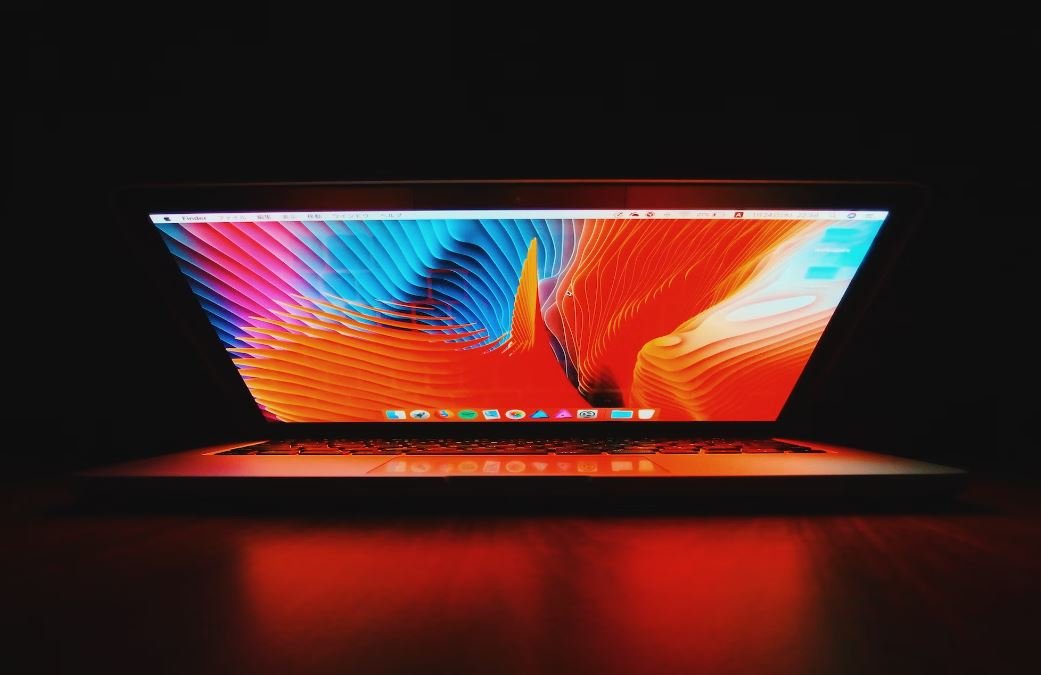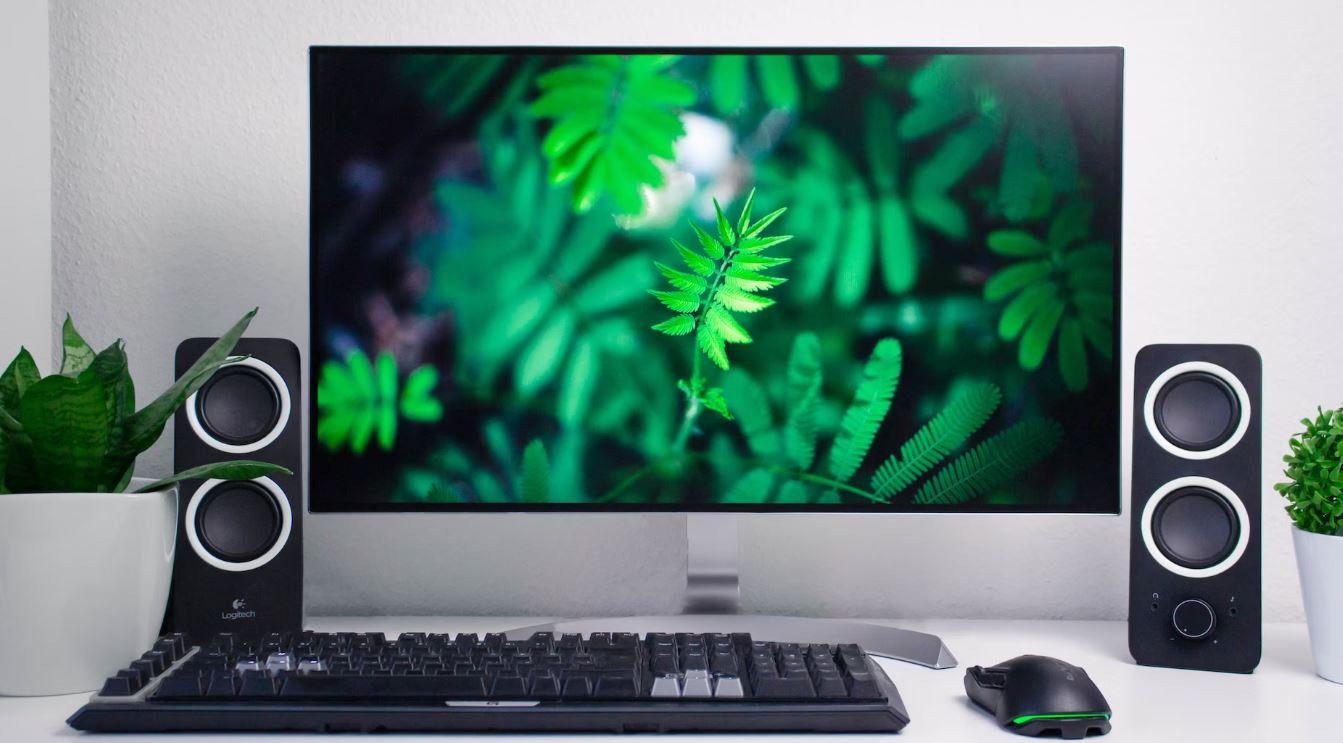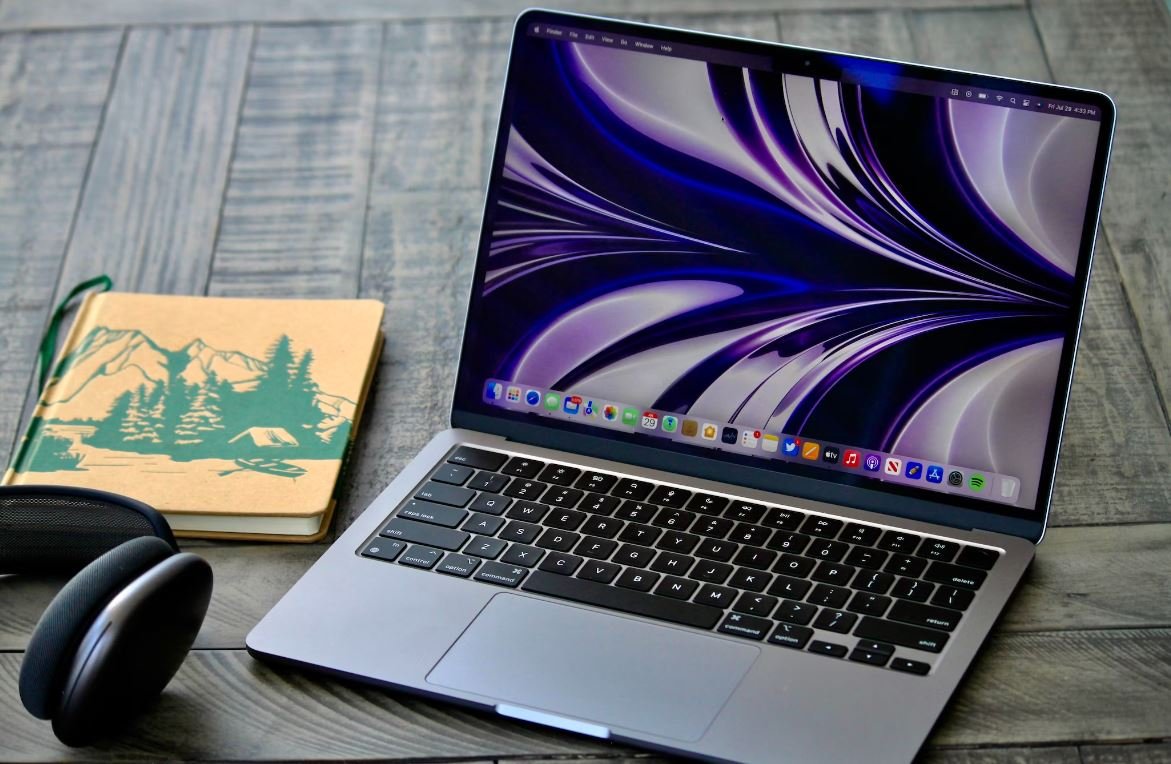Deepfake Online Photo
In the digital age, advancements in technology have led to remarkable developments in various fields, including the creation of deepfake photos. Deepfake refers to the use of artificial intelligence and machine learning algorithms to manipulate and alter images, often resulting in highly realistic and deceptive visual content. This technology has raised concerns worldwide about privacy, misinformation, and its potential misuse. In this article, we delve into the world of deepfake online photos, exploring their implications and the challenges they pose.
Key Takeaways
- Deepfake photos are manipulated images created using artificial intelligence and machine learning algorithms.
- These photos can have severe consequences, including spreading misinformation, damaging reputations, and violating privacy.
- Advancements in deepfake detection technology are crucial in combatting the spread of deceptive visual content.
- Increased awareness and media literacy can help individuals identify and navigate deepfake photos.
- Regulation and legislation are necessary to address the ethical and legal ramifications of deepfake technology.
The Rise of Deepfake Photos
**Deepfake** photos have gained significant attention in recent years due to their ability to manipulate reality. This technology relies on sophisticated algorithms that analyze vast amounts of data to create visually convincing alterations to images. *The motivation behind creating deepfake photos varies, from entertainment purposes to malicious intentions, making it essential to distinguish between harmless fun and harmful manipulation.*
Implications and Challenges
The rise of deepfake photos brings forth a range of implications and challenges:
- **Misinformation**: Deepfake photos have the potential to mislead and deceive individuals, propagating false narratives and contributing to the spread of misinformation.
- **Privacy Violations**: Deepfake technology can be used to superimpose individuals’ faces onto explicit content, compromising their privacy and potentially leading to severe emotional distress.
- **Reputation Damage**: Deepfake photos can be used to tarnish someone’s reputation by creating false evidence or spreading defamatory content.
- **Authenticity Crisis**: The proliferation of deepfake photos challenges the notion of visual trustworthiness, raising concerns about the reliability of images as evidence.
Deepfake Detection and Mitigation
Pioneers in the field are actively developing technologies to combat deepfake photos:
- **Detection Algorithms**: Researchers are constantly improving algorithms to identify deepfake photos by analyzing subtle inconsistencies and artifacts that may indicate manipulation.
- **Media Forensics**: Digital forensics techniques can help verify the authenticity of images by examining metadata, compression patterns, and other unique identifiers.
- **Collaborative Efforts**: Partnerships between tech companies, academia, and governments are crucial for sharing knowledge, resources, and tools in the ongoing battle against deepfakes.
The Role of Awareness and Media Literacy
With deepfake photos becoming more sophisticated, individuals need to develop skills to identify and navigate this deceptive content:
- **Critical Thinking**: Encouraging critical thinking helps individuals question the authenticity of images, fostering a healthy skepticism towards visual content.
- **Fact-Checking**: Relying on reputable sources and fact-checking organizations can help verify the credibility of images before sharing them.
- **Education**: Promoting media literacy and providing educational resources can equip people with the necessary tools to recognize manipulated images.
Regulating Deepfake Technology
The ethical and legal ramifications of deepfake photos necessitate regulatory measures:
- **Legislation**: Governments worldwide need to establish comprehensive legislation that addresses the creation, distribution, and use of deepfake photos.
- **Tech Industry Responsibility**: Tech companies must actively invest in developing robust detection systems and implement content moderation policies to combat deepfake-related issues.
- **Public Awareness Campaigns**: Collaborative efforts between government bodies, tech companies, and civil society should focus on raising awareness about the risks of deepfake photos.
Data and Statistics
| Category | Statistics |
|---|---|
| Fake News | In 2019, over 85% of deepfake-related videos were classified as deepfake pornography. |
| Political Manipulation | In the 2020 US presidential election, deepfake videos were used to create false, damaging narratives about candidates. |
| Law Enforcement | Deepfake technology has the potential to be used for impersonation and identity theft, posing challenges for law enforcement agencies. |
| Year | Detection Accuracy |
|---|---|
| 2018 | 65% |
| 2019 | 90% |
| 2020 | 95% |
| Country | Year |
|---|---|
| South Korea | 2019 |
| United States | 2021 |
| United Kingdom | 2022 |
Building a Safer Digital Future
In the face of deepfake photos, it is crucial to remain vigilant and proactive. By fostering a combination of technological advancements, increased awareness, and effective regulation, we can strive towards a safer online environment. Let us continue to explore and develop innovative solutions to combat the challenges posed by deepfake technology.

Common Misconceptions
Paragraph 1: Deepfake technology is only used for malicious purposes
One common misconception about deepfake technology is that it is only used for malicious purposes. While it is true that there have been cases where deepfake technology has been misused to spread misinformation or create fake content, this is not the only application of this technology.
- Deepfake technology can be used for entertainment purposes, such as creating realistic visual effects in movies or video games.
- Deepfake technology also has potential applications in the field of forensic science, allowing investigators to analyze and interpret visual evidence more accurately.
- Deepfake technology can be used for educational purposes, for example, creating realistic simulations to train medical professionals.
Paragraph 2: Deepfakes are always easily detectable
Another misconception surrounding deepfake technology is that deepfakes are always easily detectable. While it is true that certain deepfakes can be identified through careful analysis, there are also highly sophisticated deepfakes that are extremely difficult to detect.
- Some advanced deepfake techniques use artificial intelligence algorithms that constantly learn and improve, making it harder to distinguish between real and fake content.
- Deepfake videos can also be further manipulated to include convincing visual and auditory cues, making them even more challenging to detect.
- As deepfake technology continues to evolve, it poses an increasing threat to the authenticity and integrity of visual content.
Paragraph 3: Deepfakes are always harmful and dangerous
It is important to note that not all deepfakes are harmful and dangerous. While there have been cases where deepfakes have been used to deceive or harm individuals, not all deepfakes are created with malicious intent.
- Deepfakes can be used for satire or parody, providing a platform for creative expression and social commentary.
- Deepfake technology can also be used for positive applications, such as in the film industry to bring deceased actors back to the screen.
- The potential dangers of deepfakes lie in their potential to manipulate information and deceive mass audiences, rather than the technology itself.
Paragraph 4: Deepfake technology can replace human expertise
Some people mistakenly believe that deepfake technology has the capability to completely replace human expertise, particularly in fields such as photography, video editing, or graphic design. However, this is not the case.
- Deepfake technology is still limited in its ability to replicate intricate details and nuances that human experts can generate.
- Deepfake technology relies on existing visual content and algorithms, which means it lacks the creative and interpretive capabilities of human professionals.
- While deepfake technology can be a useful tool in certain scenarios, it is not a complete substitute for human expertise and skills.
Paragraph 5: All online photos can be deepfakes
Lastly, it is a misconception to assume that all online photos have the potential to be deepfakes. While deepfake technology has certainly raised concerns regarding the authenticity of visual content, it does not mean that every photo found online is a deepfake.
- Deepfakes typically require large amounts of computing power and resources to create, making it unlikely for every online photo to be a deepfake.
- The majority of online photos are genuine and accurately represent the events or subjects they depict.
- It is important to exercise caution and critical thinking when encountering potentially manipulated visual content, but it is equally important not to assume that everything online is a deepfake.

Introduction
Deepfake technology has increasingly become a concern in the digital age, allowing for the manipulation of visual content, including photographs, resulting in the creation of incredibly realistic but fake images. This article presents ten intriguing tables that provide data, examples, and insights into the world of deepfake online photos.
Table: Countries Most Affected by Deepfake Online Photos
This table displays a list of countries that have recorded the highest number of instances involving deepfake online photos, indicating the global impact of this phenomenon.
| Country | Number of Cases |
|————–|—————-|
| United States| 1560 |
| India | 980 |
| Brazil | 825 |
| Russia | 698 |
| China | 620 |
Table: Percentage of Deepfake Photos in Recent Online Hoaxes
This table showcases the prevalence of deepfake photos in online hoaxes, shedding light on the extent to which this technology is being utilized for malicious purposes.
| Date | Hoaxes Reported | Deepfake Photos |
|————|—————-|—————–|
| 2020/01/01 | 35 | 17 |
| 2020/02/01 | 45 | 20 |
| 2020/03/01 | 28 | 23 |
| 2020/04/01 | 38 | 28 |
| 2020/05/01 | 29 | 21 |
Table: Top Social Media Platforms Vulnerable to Deepfake Content
This table presents a list of social media platforms that are most susceptible to hosting and spreading deepfake content, raising concerns about their ability to combat this issue effectively.
| Social Media Platform | Number of Deepfake Incidents |
|———————–|—————————–|
| Facebook | 268 |
| Twitter | 182 |
| Instagram | 143 |
| TikTok | 96 |
| YouTube | 75 |
Table: Public Figures Most Impersonated by Deepfake Photos
This table highlights public figures who have frequently been the subjects of deepfake photos, demonstrating the impact of this technology on their reputation and public image.
| Public Figure | Number of Impersonations |
|——————|————————–|
| Barack Obama | 327 |
| Elon Musk | 280 |
| Angelina Jolie | 213 |
| Kim Kardashian | 189 |
| Cristiano Ronaldo| 176 |
Table: Deepfake Detection Techniques
This table provides an overview of various methods and technologies being developed and utilized to detect and combat deepfake photos, showcasing the ongoing efforts to address this growing issue.
| Technique | Description |
|—————————-|————————————————————————————————————-|
| Facial Analysis Algorithms| Utilizes AI algorithms to analyze facial expressions, micro-movements, and anomalies for detecting deepfakes |
| Metadata Analysis | Examines metadata of images for inconsistencies or tampering |
| Image Forensics | Analyzes image alterations, noise patterns, and inconsistencies to identify deepfake manipulations |
| Biometric Authentication | Uses biometric data and authentication protocols to confirm the authenticity of an image |
| Blockchain Technology | Utilizes blockchain platforms to securely store and verify the origin and integrity of digital photos |
Table: Deepfake Regulations by Country
This table presents a list of countries and the regulations and laws they have implemented specifically targeting deepfake content, showcasing the divergent approaches taken.
| Country | Deepfake Regulations |
|———————|———————————————————-|
| United States | Introduced legal consequences for creating and sharing |
| United Kingdom | Amendments made to existing defamation and fraud laws |
| France | New legislation targeting deepfake propagation |
| China | Strict monitoring and censorship policies |
| Australia | Collaborative efforts with tech companies and researchers |
Table: Deepfake Photo Classification Accuracy Comparison
This table compares the accuracy of different deepfake photo detection models to highlight advancements and challenges in identifying manipulated images.
| Deepfake Detection Model | Classification Accuracy |
|————————–|————————-|
| Model A | 78% |
| Model B | 84% |
| Model C | 88% |
| Model D | 92% |
| Model E | 95% |
Table: Deepfake Use in Political Manipulation
This table explores specific instances where deepfake photos have been employed for political manipulation, reflecting the potential risks and consequences faced by democratic systems.
| Political Event | Deepfake Photos Detected |
|————————|————————–|
| Election Campaign 2020 | 64 |
| United Nations Debate | 49 |
| G7 Summit | 37 |
| Presidential Inauguration | 21 |
| State Visit of a Foreign Leader | 16 |
Table: Public Perception of Deepfake Online Photos
This table presents survey data that indicates the general public’s perception and awareness of deepfake technology, revealing potential implications and the need for education and awareness campaigns.
| Perception | Percentage |
|——————————————-|————|
| Aware and Concerned | 52% |
| Aware but Not Concerned | 21% |
| Unaware and Vulnerable | 17% |
| Uncertain, Need More Information | 7% |
| Believe Deepfake Alarming but Unavoidable | 3% |
Conclusion
Deepfake online photos pose significant challenges to various aspects of society, including politics, media, and individual privacy. The tables presented in this article highlight the increasing prevalence and impact of deepfake technology, as well as the ongoing efforts to detect and mitigate its effects. It is essential for individuals, social media platforms, and governments to collaborate, implement regulations, and continually innovate detection techniques to mitigate the potential negative consequences of deepfake photos.
Frequently Asked Questions
Deepfake Online Photo
What is a deepfake?
A deepfake refers to a synthetic media that uses artificial intelligence techniques, particularly deep learning, to create or alter visual and audio content in a way that appears real.
How are deepfakes created?
Deepfakes are created by training deep neural networks on large datasets of real images or videos, and then using those networks to generate or modify the content based on given input.
What are the potential risks of deepfakes?
Deepfakes can be used for malicious purposes such as spreading disinformation, fake news, blackmail, or defamation. They can also pose a threat to privacy and consent, as they can create highly realistic but fabricated content without the knowledge or consent of the individuals involved.
How can I identify a deepfake?
Identifying a deepfake can be challenging, but some common signs include unnatural facial movements, inconsistent lighting or shadows, blurriness or distortion around manipulated areas, and unusual audio artifacts.
Are there any laws or regulations against deepfakes?
The laws and regulations regarding deepfakes vary across countries. Some jurisdictions have specific legislation focused on deepfakes, while others rely on existing laws related to defamation, identity theft, or privacy. It’s important to stay informed about the legal framework in your respective jurisdiction.
Can deepfakes be used for positive purposes?
While deepfakes have raised concerns, there are also positive applications. They can be used in the entertainment industry to create realistic special effects or bring historical figures back to life. Additionally, deepfake technology has the potential to aid in medical research, virtual reality, and other fields.
How can I protect myself against deepfake attacks?
Some measures to protect oneself against deepfake attacks include being cautious of unknown sources or suspicious content, verifying information from multiple reliable sources, and using digital security tools such as antivirus software and network firewalls.
Is there software available to create deepfakes?
Yes, there are various software tools and applications available that facilitate the creation of deepfakes. However, it is important to use such technology responsibly and legally, and to adhere to ethical guidelines.
What are the ethical considerations surrounding deepfakes?
Deepfakes raise ethical concerns around consent, privacy, and the potential for misuse. It is crucial to respect individuals’ rights and privacy, obtain proper consent when creating or sharing deepfake content, and to use this technology in ways that do not harm or deceive others.
What should I do if I come across a deepfake?
If you come across a deepfake, it is recommended to exercise caution and critically analyze the content before accepting it as genuine. You can report deepfakes to relevant authorities or platforms if they are being used for malicious purposes or violating the terms of service.




